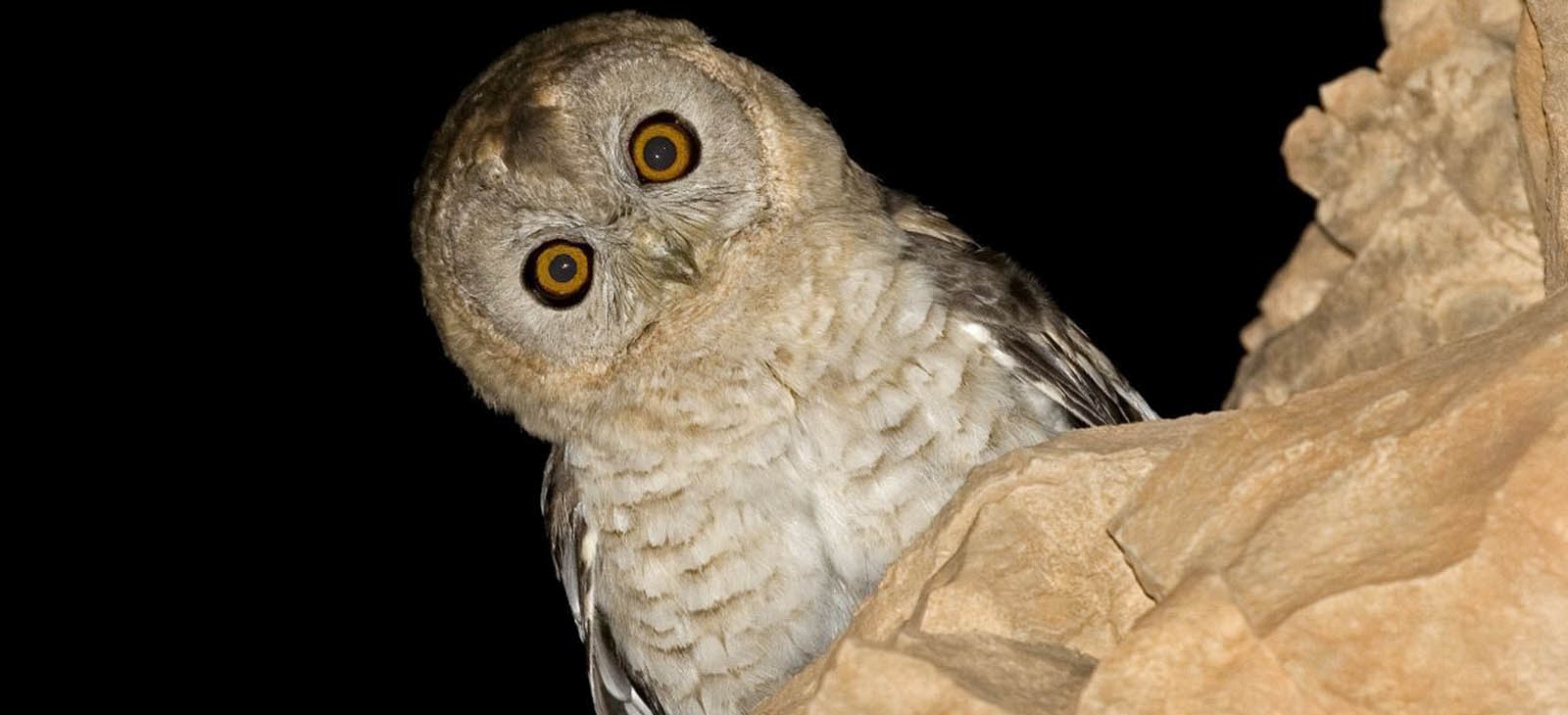The Hume’s owl or Hume’s tawny owl (Strix butleri) is a species of owl. As its alternative name implies, it is closely related to the more widespread tawny owl. This species is a part of the larger grouping of owls known as typical owls, Strigidae, which contains most species of owl. The other grouping is the barn owls, Tytonidae. Hume’s owl breeds in Syria, Israel, northeast Egypt and the Arabian peninsula.
The Hume’s owl or Hume’s tawny owl (Strix butleri) is a species of owl. As its alternative name implies, it is closely related to the more widespread tawny owl. This species is a part of the larger grouping of owls known as typical owls, Strigidae, which contains most species of owl. The other grouping is the barn owls, Tytonidae.
Hume’s owl breeds in Syria, Israel, northeast Egypt and the Arabian peninsula. Itshabitat is palm groves, desert, semi-desert and rocky ravines. It nests in crevices and holes in cliffs. Its diet consists of voles, mice and large insects. This is a medium-sized earless owl, smaller than the tawny owl at 29–33 cm in length. It is largely nocturnal and sedentary. Its stocky body and round head recall a small tawny owl, but it is paler, less streaked, particularly on the underparts, and has yellow eyes.
The call of the Hume’s owl is a hoooo-ho-ho-ho-ho, described as similar in rhythm toEurasian collared dove. The female version is deeper and less distinct than the male’s. The scientific specific name butleri refers to Colonel Edward Arthur Butler, Englishornithologist who sent specimens of the species to Allan Octavian Hume who is commemorated in the bird's common name.
Kirwan et al have suggested that the holotype for Hume's owl (S. butleri) is a different species to owls commonly ascribed to be Hume's owls. They suggested the holotype of S. butleri may be an Omani owl, or that the Omani owl is a sub species, or closely related to S. butleri. They claim that current populations of Hume's owl were an undescribed species, which they describe as new under the name S. hadorami, and that S. butleri should be a synonym for S. omanensis until a topotypical specimen of the latter can be collected and compared.

